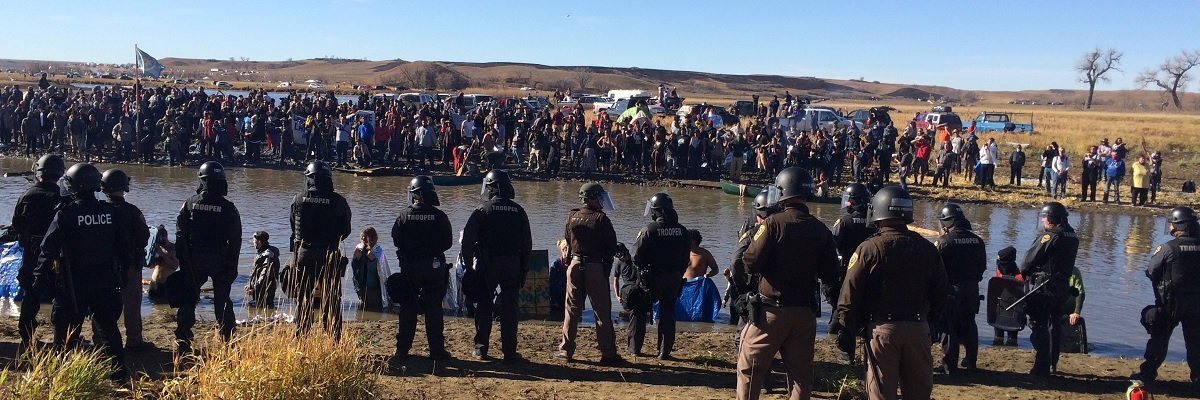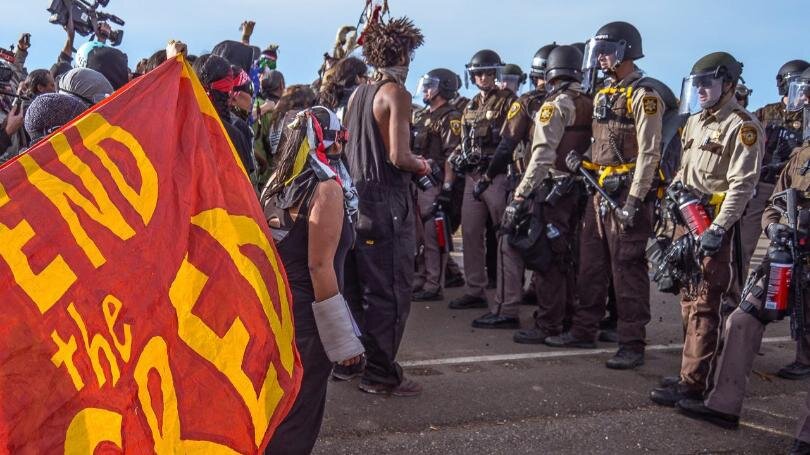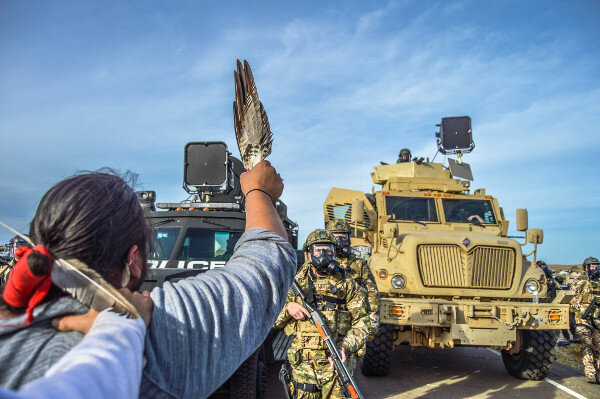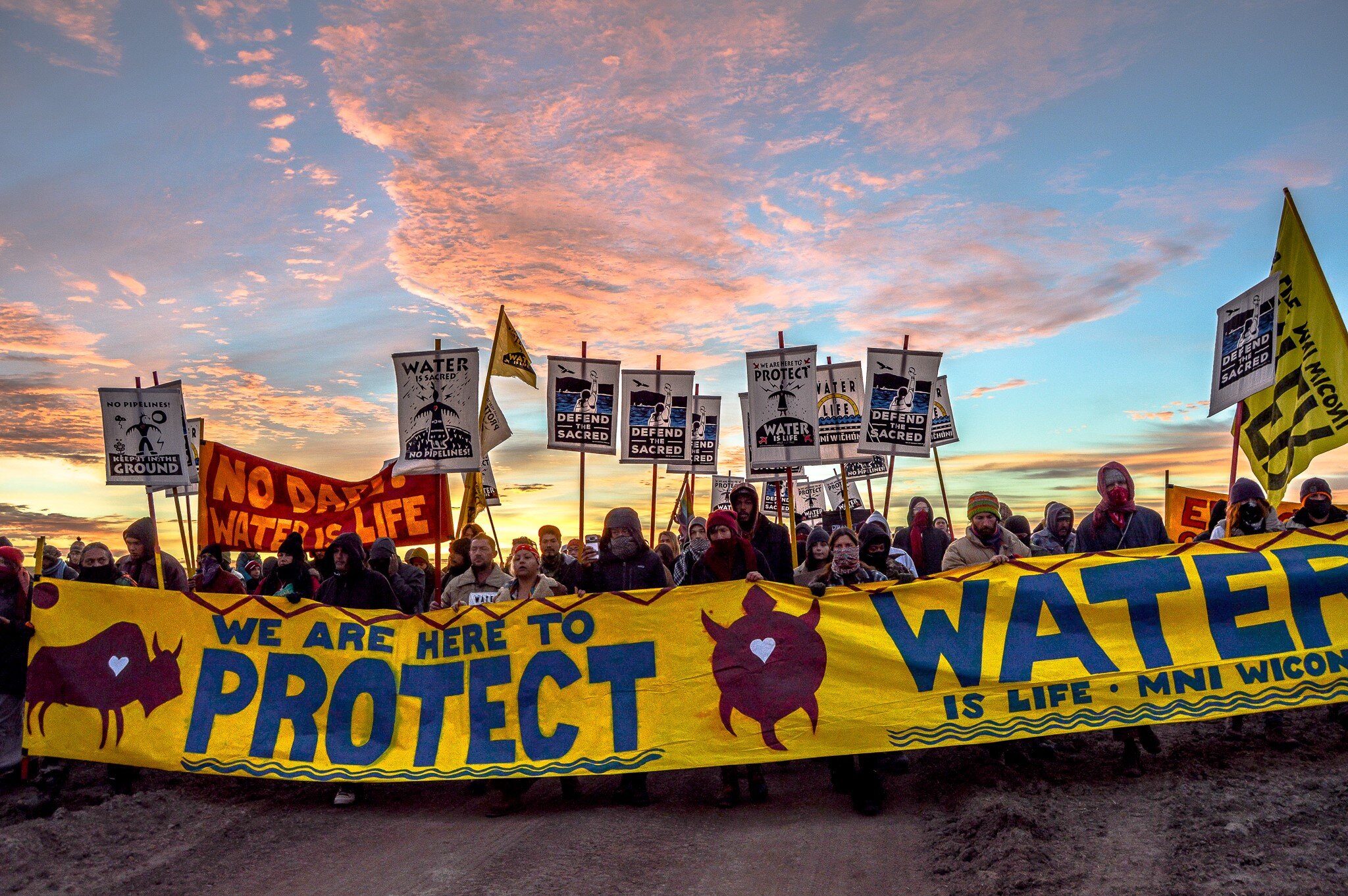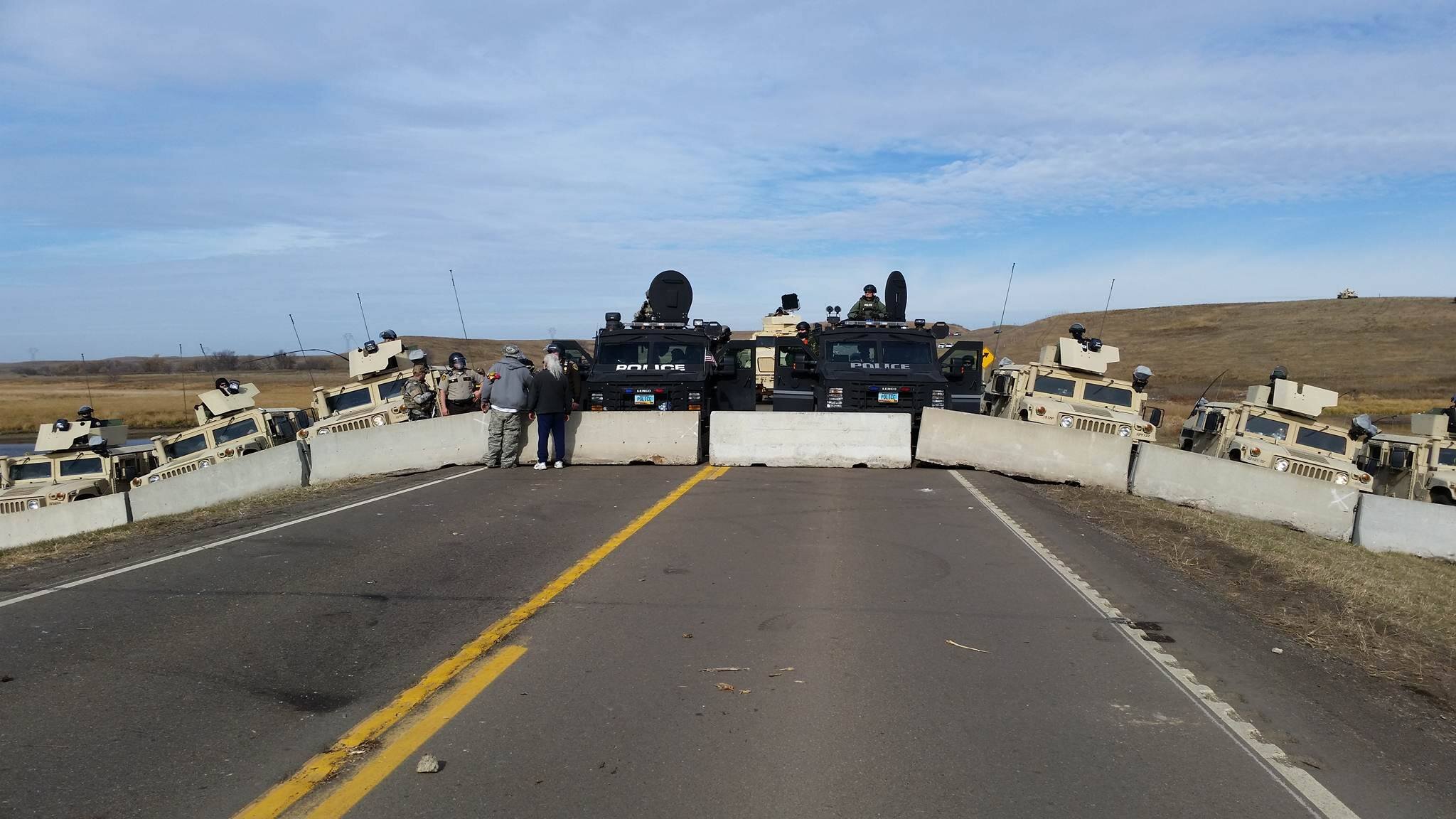*Click on Links Below:
*Stop Fracking
*Stop Offshore Drilling
*Pipeline Dangers
Team 4: Protect Water
Dakota Access Pipeline (DAPL)…Standing Rock
DAPL History
The Standing Rock Sioux tribe protested the construction of the Dakota Access Pipeline (DAPL) in 2016 in reaction to it’s approval through sacred land, lack of environmental impact assessment and the threat to region's drinking water.
DAPL is part of the Keystone pipeline, transporting oil from Canada to the Gulf of Mexico.
The pipeline was originally planned to be near Bismarck, ND but was changed due to residents complaints and concern for municipal water sources. The alternative selected by the Corps of Engineers crossed underneath the Missouri River half a mile from the Standing Rock Indian Reservation. A spill would have a massive impact on the Tribes water for drinking and farming. By treating it as small construction sites, the pipeline was granted exemptions from the Clean Water Act and the National Environmental Policy Act.
On February 7, 2017, President Trump ordered the Army Corps of Engineers to approve DAPL, stopping the environmental impact assessment. The pipeline was completed by April and its first oil was officially delivered May 14, 2017.
The pipeline, built by Energy Transfer Partners, leaked before it was opened, first leak April 6.
FIVE SPILLS, SIX MONTHS IN OPERATION: DAKOTA ACCESS TRACK RECORD HIGHLIGHTS UNAVOIDABLE REALITY — PIPELINES LEAK
Nov 2017 Keystone Pipeline leaks Over 400,00 gallons
STANDING ROCK SIOUX TRIBE PREVAILS AS FEDERAL JUDGE STRIKES DOWN DAPL PERMITS…too bad it didn’t last!
MARCH 25, 2020 Washington, D.C. — A federal court today granted a request by the Standing Rock Sioux Tribe to strike down federal permits for the controversial Dakota Access Pipeline. The Court found the U.S. Army Corps of Engineers violated the National Environmental Policy Act when it affirmed federal permits for the pipeline originally issued in 2016. Specifically, the Court found significant unresolved concerns about the potential impacts of oil spills and the likelihood that one could take place.
For example, the Court criticized the Corps for failing to address the Standing Rock Sioux Tribe’s expert criticism of its analysis, citing issues like potential worst case discharge, the difficulty of detecting slow leaks, and responding to spills in winter. Similarly, the Court observed that DAPL’s parent company’s abysmal safety record “does not inspire confidence,” finding that it should have been considered more closely.
The Court’s decision relies heavily on the technical analyses conducted by the Tribe’s agency directors and expert consultants, repeatedly citing the Tribe’s evidence that the risk of a spill, and the consequences should one occur, are far more serious than ever recognized. The Court ruling validates the Tribe’s hard work over several years to provide technical input into the remand process.
The Court ordered the Corps to prepare a full environmental impact statement on the pipeline, something that the Tribe has sought from the beginning of this controversy. The Court asked the parties to submit additional briefing on the question of whether to shut down the pipeline in the interim.
“After years of commitment to defending our water and earth, we welcome this news of a significant legal win,” said Standing Rock Sioux Tribe Chairman Mike Faith. “It’s humbling to see how actions we took four years ago to defend our ancestral homeland continue to inspire national conversations about how our choices ultimately affect this planet. Perhaps in the wake of this court ruling the federal government will begin to catch on, too, starting by actually listening to us when we voice our concerns.”
“This validates everything the Tribe has been saying all along about the risk of oil spills to the people of Standing Rock,” said Earthjustice attorney Jan Hasselman. “The Obama administration had it right when it moved to deny the permits in 2016, and this is the second time the Court has ruled that the government ran afoul of environmental laws when it permitted this pipeline. We will continue to see this through until DAPL has finally been shut down.”
Confidential Dakota Pipeline Memo: Builder Claimed Standing Rock Not a Disadvantaged Community Impacted by Pipeline
DAPL threat assessment paints nonviolent Standing Rock protestors as unruly mob, defends use of attack dogs as “protection”
UN Calls for US To Comply with Declaration on the Rights of Indigenous Peoples
Treaties Still Matter: Dakota Access Pipeline
*Click on Links Below:
*Stop Fracking
*Stop Offshore Drilling
*Pipeline Dangers



